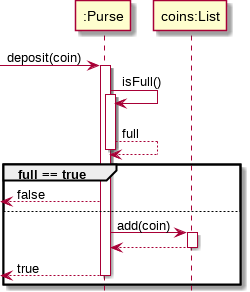Softspec lab 2 - 22 Jan 2015
Class Diagram
Class diagram shows the structure of the system and can be used for
- Modeling: Identifying key objects and their relationship
- Software design
- Implementation level diagram
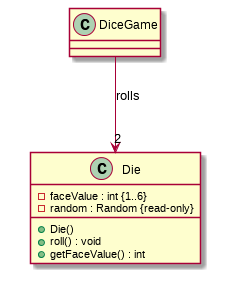
At modeling, we only have faceValue then in software design we realize that faceValue is int {1..6} and it has roll behavior. For implementation level design we adds the constructor and getFaceValue. After you have write it you might realize that you need random, a random number generator instance.
Note that we don't write the dice1, dice2 attributes in DiceGame as it is shown already as an association ("rolls")
Example
public class LineItem extends AbstractItem implements Comparable<LineItem> {
private Product product;
public int getDayOfMonth() {
Date today = new Date();
int day = today.getDate();
return day;
}
}
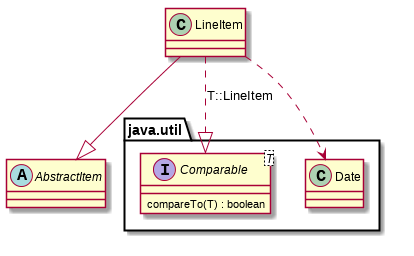
Arrowheads in UML:

Example 2
Aggregates are things that collect other things
public class MailMessage {
private Address sender;
private Calendar date;
private String subject;
private String body;
}
public class Mailbox {
private List<MailMessage> messages;
public Mailbox() {
messages = new LinkedList<MailMessages>();
}
// ...
}
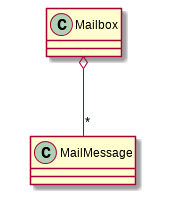
-
- is written instead of a number and means any amount
- if we write 0..32767 instead of * it means that it can contains any amount of MailMessage up to 32767
Example 3
/**
* a square on a game board
*/
public class Square {
private String color;
private Piece piece; // piece on this square, maybe null
}
/**
* a game board for chess
*/
public class ChessBoard {
private final Square[] squares = new Square[64];
public ChessBoard() {
for(int k = 0; k < 64; k++){
square[k] = new Square();
square[k].setColor((k%2==0) ? Color.BLACK : Color.WHITE)
}
}
}
In this case ChessBoard owns Square. Square only appears in one collection and if we destroy the collection it will destroy the individual objects too. This is called "Composition".
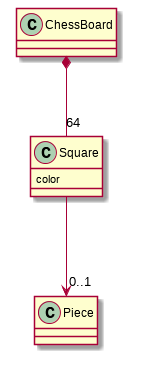
Example 4
public class Bank {
public static final String NAME = "SKE Bank";
private List<Account> accounts;
private static Bank instance;
protected Person manager;
Address location;
public static Bank getInstance() {
}
}
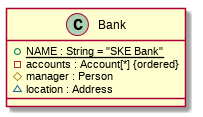
Or we can write stuff as association
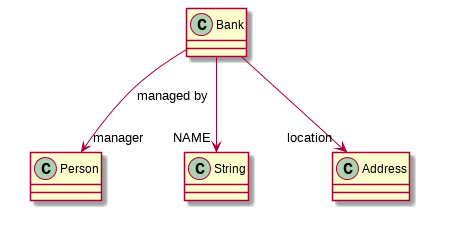
Sequence diagram

If the Coin type is written as :Coin we say that it is some sort of Coin object (can be any Coin) but if it is written as C:Coin it IS the Coin class.
We can even write just : to indicate that we doesn't care about type of object at all.
In the design phase we can write informal name like "an Order" and also informat method names
Example
public class CoinMath {
public double add(Coin a, Coin b){
double va = a.getValue();
double vb = b.getValue();
return va+vb;
}
}
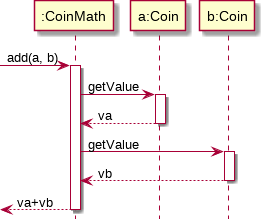
public class Purse {
private int capacity = 10;
private List<Coin> coins;
/** deposit money into the purse */
public boolean deposit(Coin coin){
if(isFull()){
return false;
}
coins.add(coin);
return true;
}
/** return true if purse is full */
public boolean isFull() {
if(coins.size() == capacity){
return true;
}else{
return false;
}
}
}
